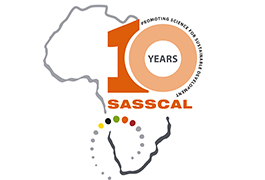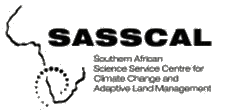
Picture taken at the National Youth Week 2022 in Lüderitz, Namibia
World Population Prospects 2022 report from the United Nations shows that the world’s population is projected to reach 8 billion in 2022. While Africa is nearing 1.3 billion with an average annual increase rate of 2.5%. The youth population between the ages of 15 and 24 years is estimated to be 1.2 billion, accounting for 15.5% of the world’s population, and this is projected to be 15.1% by the year 2030 and 13.8% by 2050 (United Nations, 2019c).
Africa leads in the number of the youngest population in the world with sub-Saharan Africa comprising 70% of its population under the age of thirty. A large number of young people creates an opportunity for the continent’s development if only the youth are empowered and their potentials are realized. With such population growth and increased economic activities,it has become more critical to create opportunities for work and innovation driving a vast demand for energy services across the continent in the decades to come.
Youth involvement in socio-economic development and environmental awareness is not only a question of inclusion but rather a vital process for sustainable development, innovation, peace and security of our continent. Youth climate leaders have been echoing a demanding voice to international organizations, corporations and governments to bring about systemic change. Millennials show grave concern and drive climate awareness campaigns for a sustainable planet. The youth population have proven their benefits in contributing to a healthy and prosperous society and building a cohesive nation across Africa. This track record can be seen in supporting their communities, advocating for equality and justice, and building sustainable communities.
It is a pressing matter in Africa to create a young educated population and even more urgent to create productive well-paying jobs, to underpin that employment can be a strong path out of poverty. Africa’s fast-growing energy sector offers vital opportunities to create wide-ranging jobs for its young population. According to recent official data from the International Labour Organization around 2 million Africans were employed in the energy sector in 2019, accounting for about 0.5% of the total labour force(ILO, 2022). The answer/solution to this could be expanding educational opportunities to lower and middle-income countries with growing youth populations.
Namibia, like many other African countries, has more people under 18 than other countries around the world. This youth population in Namibia and the rest of Africa is projected to double by 2050, placing more and more stress on already strained economic resources.
Currently, the number of annual graduates in Namibia is disproportionate to the available employment opportunities. There are many Namibian graduates, both postgraduate and undergraduates, who are qualified but remain unemployed. Experts anticipate that the number of jobs within the emerging Green Hydrogen economy will grow exponentially over the coming years. According to a recent labour force survey, Namibia’s youth unemployment rate stood at a staggering 46.1 percent, of which males accounted for 43.7 percent and female unemployment was 48.5 percent, signifying that every second young woman was unemployed. Some of the reasons for Namibia’s challenge in fully meeting the youth employment potential include a relative lack of skills development, unstable labour market experience, gender disparity, lack of experience, inappropriate or lack of career guidance in schools and a mismatch between the labour market demand and supply in terms of skills and knowledge.
Given its world-class renewable energy potential in the form of abundant wind and sun resources, Namibia is in an optimal location to be a globally competitive producer of Green Hydrogen and its derivatives. In the Harambee Prosperity Plan II, the Namibian Government articulates plans to explore the feasibility of incubating a carbon-neutral synthetic fuels industry to diversify and recover the country’s economy.
Green hydrogen is fast becoming a topic of global interest among environmentalists, energy experts and governments as the world looks towards more environmentally friendly forms of energy. Green hydrogen refers to hydrogen fuel created using renewable energy rather than fossil fuels, producing only water as a by-product. It can be in gas or liquid form and can be converted into electricity, and is quickly emerging as a potential solution for sectors such as aviation, marine shipping and other heavy industries. Transitioning from fossil fuels to renewable energy represents a co-benefit in terms of reducing greenhouse gases and pollution from fossil fuels that continue to increase the greenhouse gases (GHG) that cause climate change.
To ensure its competitive advantage, the Namibian Government has established key partnerships globally. One such partnership is with the German Government. On the 25th of August 2021, the Namibian and German Governments signed a Joint Communique of Intent (JCOI) which availed grant funding for the development of the Green Hydrogen industry in Namibia. One of the key priority areas of this Agreement was “Capacity Building”, where €5 million was allocated for Scholarships for the Namibian youths.
As such, the Namibian Youth for Green Hydrogen (Y4GH) Scholarship Programme was established. The scholarship is fully funded by the German Ministry of Education and Research (BMBF). The Southern African Science Service Centre for Climate Change and Adaptive Land Management (SASSCAL) has been appointed as the implementing partner for the Y4GH programme. As a first move towards building a Green Hydrogen-ready workforce, the scholarship has been designed to target two groups. The first group are unemployed Namibian graduates and the second are those interested in pursuing Vocational Education and Training in Green Hydrogen. Hence, the call for scholarship applications for green hydrogen and renewable energy studies at Master’s degree and TVET (Technical Vocational Educational Training) certificate and diploma levels was published on 12 March on the SASSCAL (https://jcoinamger.sasscal.org) and Green Hydrogen Namibia (https://gh2namibia.com/) websites.
To raise awareness, SASSCAL promoted the programme on 29 April 2022 to about 400 youth representing all the 14 regions of Namibia at the Youth week convened by the National Youth Council of Namibia in Lüderitz from 25 – 29 April 2022. The call closed on 8 June 2022 and attracted 1154 applications. The selection process involves 3 stages: Screening stage by SASSCAL, Eligibility evaluation by the Technical Working Group comprising Namibia Government representatives, BMBF and SASSCAL and lastly the Strategic Working Group comprising of Namibia Government and BMBF makes the final decision on the final list. The scholarships will advance Namibian’s skills for a range of different interests to support the green hydrogen and renewable industries.




